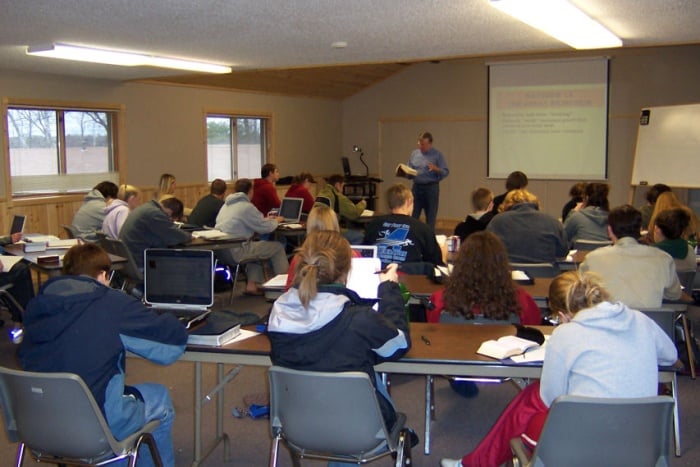As a high school teacher, I often run across the road blocks my school district has set up to inhibit students from using social networking sites during class time. Much like parental controls this is tactical maneuver from schools intended to protect the students. Unfortunately it’s not unlike sticking a finger in the proverbial damn. The plethora of social media sites that high school students have access to is astounding. And which ones are popular or trendy changes on a weekly basis.
Cheating Via Mobile Phone: Do Schools Need Parental Controls?
Cell phones have changed everything in our kids' schools, including the way they cheat. The old ways of cheating (tiny crib sheets or notes written on the arm in ink) have been replaced with a new kind of digital cheating. Cell phones are tiny, ubiquitous, and easy to hide – and 1 in 3 kids say they've used their cell phones to cheat at least once in school. Do schools need to adopt some kind of parental controls?
Cheaters have a myriad of options when they've got a cell phone, particularly a smart phone, at their disposal. They can store notes, text friends for answers, search the Internet for answers, or take pictures of the test and forward it to friends who haven't taken it yet.
Read More »Kids Safety: School Open-Technology Policies, Benefits and Challenges
Kids safety at school is a big deal, and theres no exception when it comes to internet safety, and facebook for kids at school. After a semester of watching the policy in place, here are some general reflections:
The Pros:
-
The entire school is now wireless, which makes showing videos, utilizing web tools and accessing sites, a far simpler task in each classroom. If a student brings up a question that the teacher or class needs further information about—the internet is available at the click of the mouse or tap of a finger.
-
Students are spending less of their creative brain power trying to figure out how to hide the fact that they are texting and teachers are spending less of their valuable prep time filling out detention slips for students who “couldn’t” wait until after school to send a message.
Replacing Facts with Skills in the Classroom: Internet Safety
A student asked me recently: “Why do I need to know when Frankenstein was published? I have a smart phone—I can always find the answer if I need it.”
He was right. And while I can expound easily and at length about how important it is to understand the time period in which an author was writing in order to fully analyze the novel, for most students in American high schools today, my lecture would fall under the “not relevant—tune out” category, and instead of listening to me, they’d spend the next twenty minutes ignoring my painstakingly planned lesson in favor of tweeting and texting their friends from under their desks.
School Bullying and Cyberbullying Outbreak
Sexting Legislation
 Sexting is quickly becoming a rampant problem in high schools and junior highs. One in five teens have sent a nude or semi-nude picture of themselves to someone else’s cell phone, and one in four have seen a nude or semi-nude picture intended for someone else.
Sexting is quickly becoming a rampant problem in high schools and junior highs. One in five teens have sent a nude or semi-nude picture of themselves to someone else’s cell phone, and one in four have seen a nude or semi-nude picture intended for someone else.
In this climate where racy self-portraits of our kids are being circulated around the school or Internet, many parents are up in arms but don’t know what to do. It’s certainly alarming, but is it illegal? Should it be?





